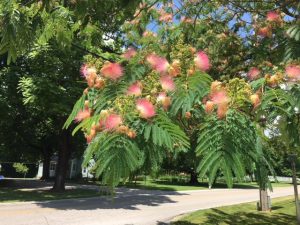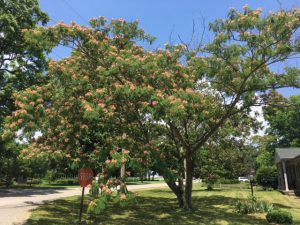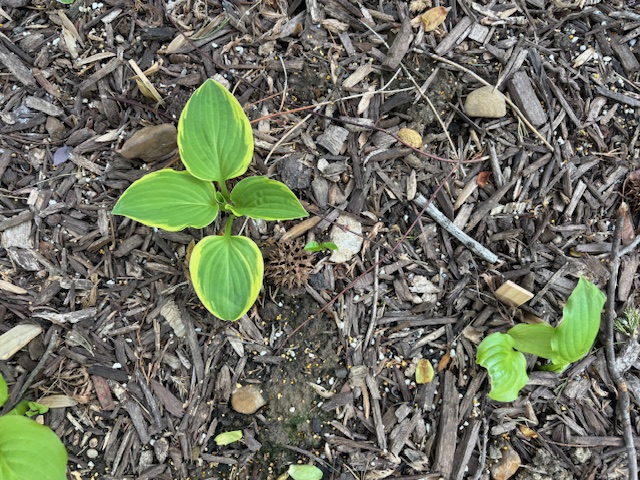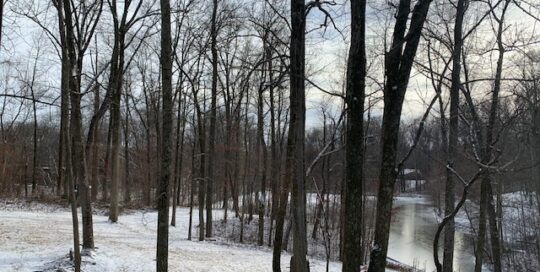Mimosa Trees: A Beautiful, Invasive Species
Views: 2443


It seems that so many invasive plants are also beautiful – think Bradford Pear (Pyrus calleryana), purple loosestrife (Lythrum salicaria), Japanese honeysuckle (Lonicera japonica), and burning bush (Euonymus alatus). A beautiful or unusual plant is very difficult for a gardener to pass up. We don’t buy an invasive plant on purpose. We read the glowing descriptions in the seed catalogs or see a gorgeous plant in the garden center and just have to have it! That beautiful immigrant may be widely accepted and grown for several decades before it reaches “critical mass” in an ecosystem and starts out-competing native plants. A really great example is kudzu (Pueraria montana). It is actually a lovely plant, with purple, pea-type flowers and it’s completely edible. Hindsight being 20 / 20, it shouldn’t have ever been brought to this country. But we didn’t know that back then.
Mimosa Trees
Although it’s not yet a problem in Southern Indiana, the beautiful mimosa tree (Albizia julibrissin), aka “silk tree” was brought from China into North America in 1745 and has become invasive in the far South, up to at least Tennessee. Severe winters damage it, so perhaps that is why it naturalized in Southern Indiana but hasn’t become invasive here.
It can grow two feet or more a year and can achieve 40 feet in height. It’s a deciduous tree, hardy to Zone 6, loves sunlight and will colonize disturbed earth (and it’s not picky about soil quality). It’s short-lived (maybe 10 to 20 years). The wood is brittle and the limbs are prone to breakage.
Mimosas make lots of seeds and will re-seed in your yard or garden. Just mow them down or pull them out. If you plant one on purpose, site it away from your car, house, sidewalk or driveway, because the spent flowers and the seed pods can get pretty messy and the roots are shallow but strong – they will buckle the concrete.
The problem is, it’s a beautiful, delicate looking tree with fern-like foliage and pink powder-puff blooms giving off an indescribably delicious perfume very attractive to butterflies. Its overall appearance is romantic, exotic, and delicate. I have a larger one growing on the side of our yard and it’s blooming now.
Usually, I’m merciless, even fanatic about invasive plants; cutting them down or pulling them out with maniacal glee. But, I can’t, I just can’t do that to mimosas. I won’t plant any more, but I can’t cut my tree down. I just can’t. I’m sorry!
Stay Green, Good Friends!
Meet Dona Bergman
Dona Bergman is a founding member, Southwest Indiana Chapter of the Indiana Native Plant & Wildlife Society, and an Advanced Master Gardener.







